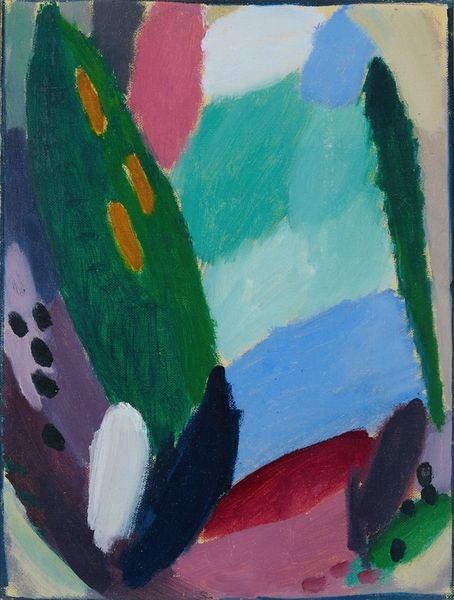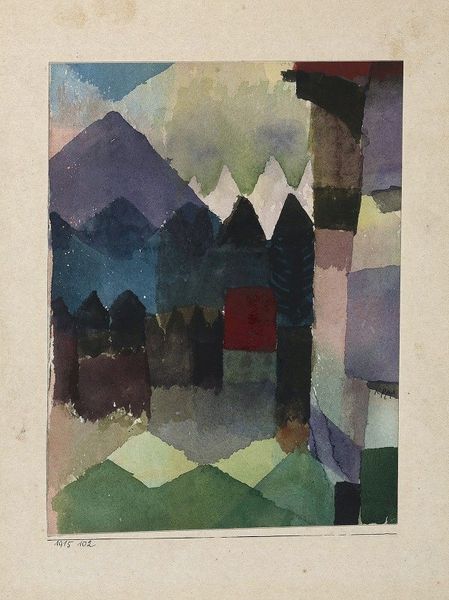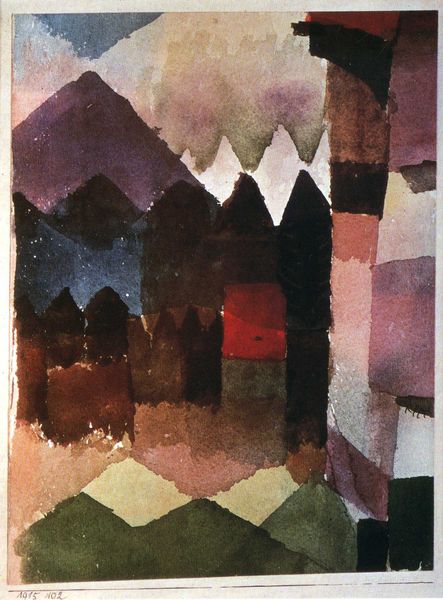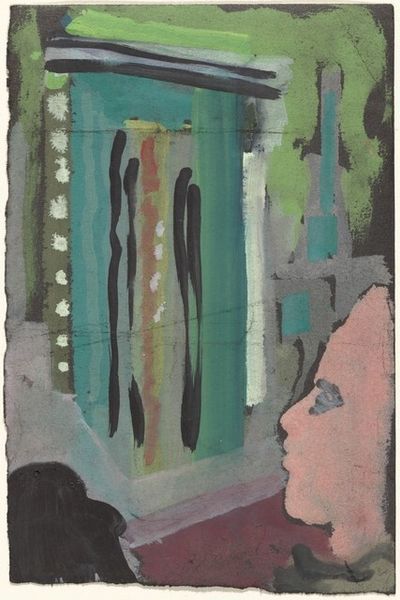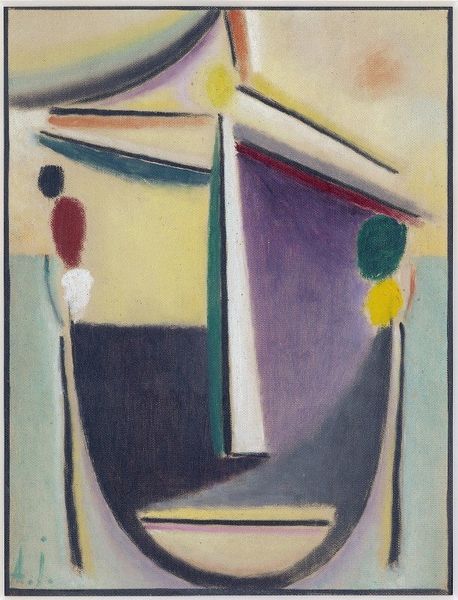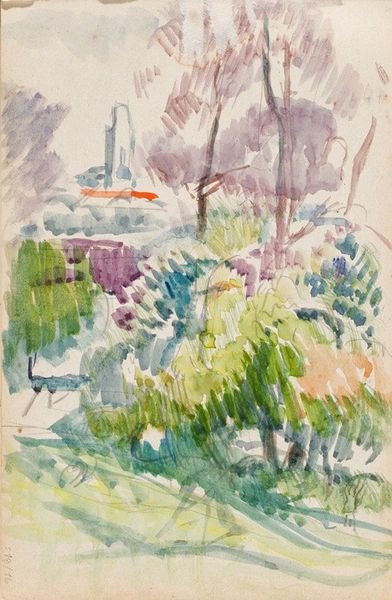
Copyright: Public Domain: Artvee
Editor: Here we have Paul Klee’s "Park," created around 1920, a mixed-media piece featuring watercolor. It feels very orderly to me, almost like an urban plan rather than a wild, sprawling park. What do you see in this piece, particularly considering the historical context? Curator: It's interesting that you see order. I think Klee, especially post-World War I, was grappling with how to represent a world in chaos. Consider the socio-political climate: the collapse of empires, the rise of new ideologies. A "park," traditionally a space of leisure and order for the bourgeoisie, is here deconstructed. Note how Klee uses geometric forms – are they truly trees and paths, or fractured symbols of a lost idyllic space? Editor: So, it’s not just about representing nature, but also commenting on society? Curator: Precisely. The arrangement challenges traditional landscape painting, doesn't it? Think about the public role of art at that time – should it offer escapism or confront viewers with reality? Klee is presenting a mediated experience, a "constructed" park, reflecting a world increasingly shaped by human intervention and, arguably, devastation. Does the colour palette reinforce any sense of unease or disharmony for you? Editor: I see what you mean. The colors aren’t exactly vibrant; there's a muted, almost somber tone. The "park" as a concept becomes something more complicated. It makes me think about planned spaces today, and who gets to access them. Curator: Exactly! And the "politics of imagery," as it were, remains relevant. Klee anticipated a world where nature is always filtered through social and political lenses. Editor: This has given me a totally different perspective on landscape art! Curator: Indeed! Klee encourages us to see beyond the surface and question the structures that shape our perceptions.
Comments
No comments
Be the first to comment and join the conversation on the ultimate creative platform.

